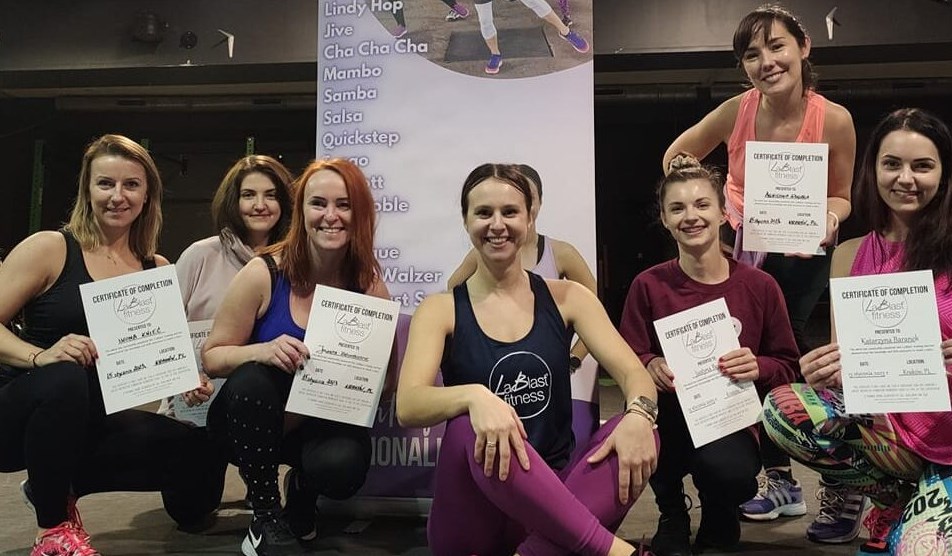You might not think of yourself as a dancer. In fact, maybe even the idea of dancing makes your palms sweat. But growing scientific evidence suggests that getting up and grooving with others has a lot of benefits. In our recent study, we found that synchronising with others while dancing raised pain tolerance. It also encouraged people to feel closer to others.
This might have positive implications for dance movement therapies, which are already showing promising results in the treatment of dementia and Parkinson’s. Music-based therapy is also already used for children with autism, and perhaps synchronised and exertive dance therapy could also help them connect with others.
The power of music
Humans are naturally susceptible to music: when we hear a good beat, it makes us want to move. You might find yourself tapping your finger or foot in time to a song on the radio, or bobbing your head (if not whole body) at a concert. This is something that even babies do.
Humans have danced together in groups throughout history. And with a rise in dance activities ranging from Zumba to flashmobs, collective dancing – an activity which involves synchronising with both the musical beat and fellow dancers – shows no signs of letting up.
So, why do people do it? There has been much debate about whether there is any evolutionary explanation for our tendency to dance. Most likely it features in our selection of romantic partners, and also in how we signal our group membership to other rival groups (think of the highly synchronised Hakka). One of the main theories about why we dance is that it offers opportunities to form positive connections with others.
So far, our testing of the “social bonding” hypothesis of dance has focused on one particular aspect: synchronisation with other people. It turns out that when you synchronise even a small movement, like the tapping of your finger in time with someone else, you feel closer and more trusting of that person than if you had tapped out of time.
This is because when we watch someone else do the same thing at the same time as us, our brain ends up with a [merged sense](http://www.cell.com/trends/cognitive-sciences/abstract/S1364-6613(03) of us and them. It feels like we “become one”. Anyone who has ever rowed might be familiar with that moment when you hit a state of perfect synchronisation with your rowing team. Suddenly you feel like you are part of something bigger than just yourself, and that you belong.
The science of dance and friendship
In other social animals like monkeys and apes, activities which encourage social connections, or “friendships”, are underpinned by various hormones. It is likely that we use similar chemical pathways to forge our social relationships.

Called the brain’s “happy chemicals” because of their feelgood effects, endorphins are released when we exercise. They may also be an important chemical in human and other primate’s bonding processes. In fact, the social closeness humans feel when doing synchronised activities may be because they trigger the release of a cocktail of bonding hormones, including endorphins.
Dance can be both exertive and synchronised, so we wanted to see what the relative effects of both these aspects might be on bonding and on endorphins. As it’s hard to measure endorphin levels directly, we used pain thresholds as an indirect measure. More endorphins mean we tolerate pain better, so measuring relative increases in people’s pain thresholds can indicate whether endorphins are being released (although other chemicals like endocannabinoids are probably also in the mix).
We had 264 young people take part in the study in Brazil. The students did the experiment in groups of three, and they did either high or low-exertion dancing that was either synchronised or unsynchronised. The high exertion moves were all standing, full bodied movements, and those in the low-exertion groups did small hand movements sitting down. Before and after the activity, we measured the teenagers’ feelings of closeness to each other via a questionnaire. We also measured their pain threshold by attaching and inflating a blood pressure cuff on their arm, and determining how much pressure they could stand.

Not surprisingly, those who did full-bodied exertive dancing had higher pain thresholds compared to those who were seated in the low-exertion groups. But curiously we also found that synchronisation led to higher pain thresholds, even if the synchronised movements were not exertive. So long as people saw that others were doing the same movement at the same time, their pain thresholds went up.
Likewise, synchronised activity encouraged bonding more than unsynchronised dancing, and more energetic activity had a similar effect – it also made the groups feel closer. So all in all, moving energetically or moving in synchronisation can both make you feel closer to others when you are dancing, and lead to higher pain thresholds. But dance which combined high energy and synchrony had the greatest effects.
Although there are lots of examples of highly synchronsied and exertive dances around the world (flashmobs are a good example), dance also involves other features like creative expression, improvisation, ritual and cultural significance. These elements no doubt also contribute to why we have such a widespread appreciation and aptitude for dance.
But whatever the reason, if dance helps us build social cohesion and trust, then as a collectively advantageous behaviour it is probably one we should all do more. So the next time you find yourself at an awkward Christmas party or wedding dance floor, wondering whether or not to get up and groove, just do it.
Author: Bronwyn Tarr, Post-doctoral Research Associate, Department of Experimental Psychology, University of Oxford
Source: The Conversation under a Creative Commons license. Read the original article.
Main Photo: Just do it. Herri Bizia/Flickr, CC BY-SA











